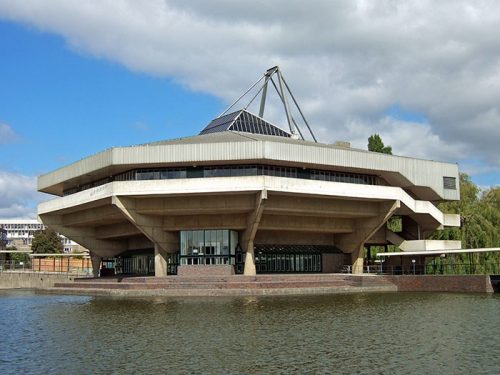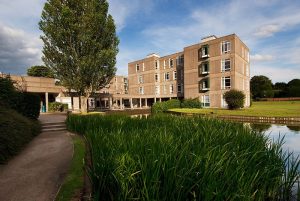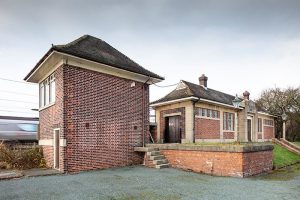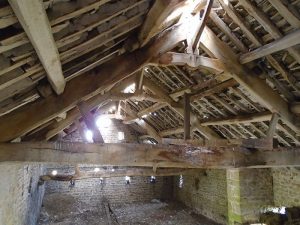Several notable Yorkshire buildings listed during 2018

Several Yorkshire buildings and sites have been listed for their historical importance during 2018. The sites of interest are from a list of more than 900 buildings and sites listed this year by Historic England.
University of York, Central Hall, Heslington, York. Grade II listed
The University of York was one of seven new universities founded in England between 1958 and 1961. Central Hall is the centrepiece of the University’s western campus and has a striking and bold design. The exceptionally detailed development plan behind the campus was heralded as the beginning of contemporary university planning in Britain. The building is a concrete structure with a suspended mild steel tubular roof clad in aluminium, with the upper floors, where the auditorium is located, cantilevered out on the lake sides. The balcony is a stunning feat, running along the first-floor level on the east side of the building and rising to the second-floor level with wide concrete stairs covered by tiles. It continues a historic tradition established by late 19th century and early 20th century ‘red brick’ universities in featuring a great hall for special events.
Central Hall was designed by Andrew Derbyshire and Maurice Lee of RMJM in 1966-1968 with the notable mid-20th century architects, Stirrat Johnson-Marshall and Andrew Derbyshire.
University of York, Campus West designed landscape, Heslington, York. Grade II Registered Park and Garden

Credit: Historic England
The University of York Campus West designed landscape was laid out from 1963-1980 It is a high-quality post-war university landscape that fulfils the architects’ masterplan vision of creating a town in miniature with a pedestrianised environment.
One of the key features of the landscape is the lake, which has two small islands, a courtyard pool and a fountain which form a central focal point at the heart of the campus. Offering bursts of green against the surrounding concrete structures are the lake features, reed beds and lily pads, which were introduced to improve water purity. The landscape is relatively unaltered since it was laid out and the design successfully integrates the new landscape with the historic Heslington Hall gardens.
It was designed by distinguished mid-20th century architects Andrew Derbyshire and Maurice Lee of RMJM with Frank Clark, the co-founders of the Garden History Society (now The Garden Trust).
Former Otterington Railway Station, Station Road, South Otterington, Northallerton, North Yorkshire. Listed Grade II

Credit: Historic England
Travellers on the East Coast Main Line north of York typically pass the former Otterington Railway Station at over 100 miles per hour: blink and you miss it. This station building with its signal box was built by the London and North Eastern Railway (LNER) in 1932 as a replacement for the Victorian station that had been cleared away to allow the expansion of the line to four tracks.
This was part of LNER’s rivalry with the London Midland Scottish Railway in providing ever faster rail services between London and Scotland. The design of the buildings displays a 1930s streamlined aesthetic that was widely used at the time to promote a sense of modernity and speed. Perhaps in deference to more conservative architectural tastes of this part of rural North Yorkshire, the design was carefully moderated with neo-Georgian detailing. The 1930s modernity of Otterington Railway Station however never changed the fact that this was always a sleepy, little-used wayside railway station.
It closed to passengers in 1958 and to goods traffic in 1964. Its remarkable survival is owed to its passing into sympathetic private ownership.
Cappleside Barn, Rathmell, North Yorkshire. Listed Grade II*

Credit: Historic England
Cappleside Barn in Ribblesdale, North Yorkshire was built in 1714. It is a large barn with a remarkable ornamental roof structure with carefully shaped timbers that also include carved motifs such as ‘daisy-wheels’. At first, Historic England thought that these roof timbers had been reused from a high-status medieval house, but dendrochronology has shown that the timbers came from trees felled shortly before the construction of the barn.
The barn, with a cutting-edge design for its time, includes integrated housing for cows which allowed more cattle to be kept over the winter, increasing herd sizes and farming prosperity. To protect this investment, 18th century belief systems saw the use of witches’ marks or special carved motifs placed near openings to ward off witches and evil spirits. ‘Keeping up with the Jones’s’ may have been part of the reason this barn was so ornamental, but this was probably not the sole motivation.








